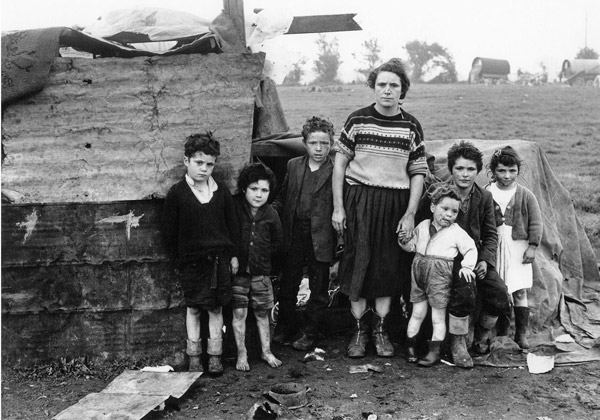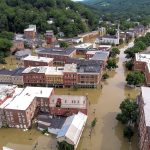Irish Travellers in Brattleboro
Photographers have long been captivated by itinerant peoples. Dorothea Lange and Walker Evans photographed migrant laborers and sharecroppers during the Depression. Josef Koudelka became famous when Aperture published The Gypsies in 1975. Sebastiao Salgado is regarded as perhaps today’s most distinguished documentary photographer based on the epic sweep of his photographs of the world’s dispossessed. […]

Coffee By Design | Portland, Maine
Photo Credit : Katherine KeenanPhotographers have long been captivated by itinerant peoples. Dorothea Lange and Walker Evans photographed migrant laborers and sharecroppers during the Depression. Josef Koudelka became famous when Aperture published The Gypsies in 1975. Sebastiao Salgado is regarded as perhaps today’s most distinguished documentary photographer based on the epic sweep of his photographs of the world’s dispossessed. Steidl published Joakim Eskildsen’s brilliant The Roma Journeys in 2007.
That same year, New England College Press published Dublin-born, New York-based photographer Alen MacWeeney’s Irish Travellers, Tinkers No More, a collection of 61 black and white photographs of Irish nomads alas now out of print. Not to worry. Now (through August 2), the Vermont Center for Photography in Brattleboro is featuring an exhibition of Irish Travellers, Tinkers No More.
Alen MacWeeney, 70, got his start as a photographer as an assistant to legendary fashion photographer Richard Avedon. While his own work runs the gamut from fashion and editorial to portraiture and travel photography, it is this powerful body of documentary photographs of Travellers that most recommends him to view.
Irish Travellers were once known as Tinkers because many worked as itinerant tinsmiths, wandering the countryside, camping where they could, repairing pots and pans. Though they are a marginalized people similar to the Roma, or Gypsies, they are not related. In fact, the origins of the clannish nomads is lost in obscurity. Legend has it that they are descendants of a tinsmith who helped construct Christ’s Cross and, thus, were condemned to roam the earth, homeless until Judgment Day.
MacWeeney first came across the Travellers camped in a field on the outskirts of Dublin while shooting a photo essay on poet William Butler Yeats in 1965. Over the course of the next six years, he visited the Travellers repeatedly, photographing them at work and play, at weddings and funerals, and recording their music and their stories. The photographs he made depict quintessential outsiders, resourceful, independent people living on the margins of society – which is just the way many artists like to think of themselves, hence the fascination.
Looking upon the incidental squalor and bleakness that surrounds these hardy people, you have to wonder whether Irish playwright Samuel Beckett had the Travellers in mind when he created the dispossessed souls of his absurd classic Waiting for Godot. There is about them a tragedy without despair.
In 2001, Alen MacWeeney returned to Ireland in search of the Travellers he had photographed almost 40 years before, and from his quest made a film that was shown at the Brattleboro Museum and Art Center on June 6. While the Travellers still exist – perhaps 22,000 in Ireland, 15,000 in the United Kingdom, and 7,000 in the United States – they have tended to settle down, abandoning their caravans and blending in with the general population. Thus Irish Travellers, Tinkers No More does what documentary photography does best, stopping time to capture a passing way of life.
[Vermont Center for Photography, 49 Flat St, Brattleboro VT, 802-251-6051.]







